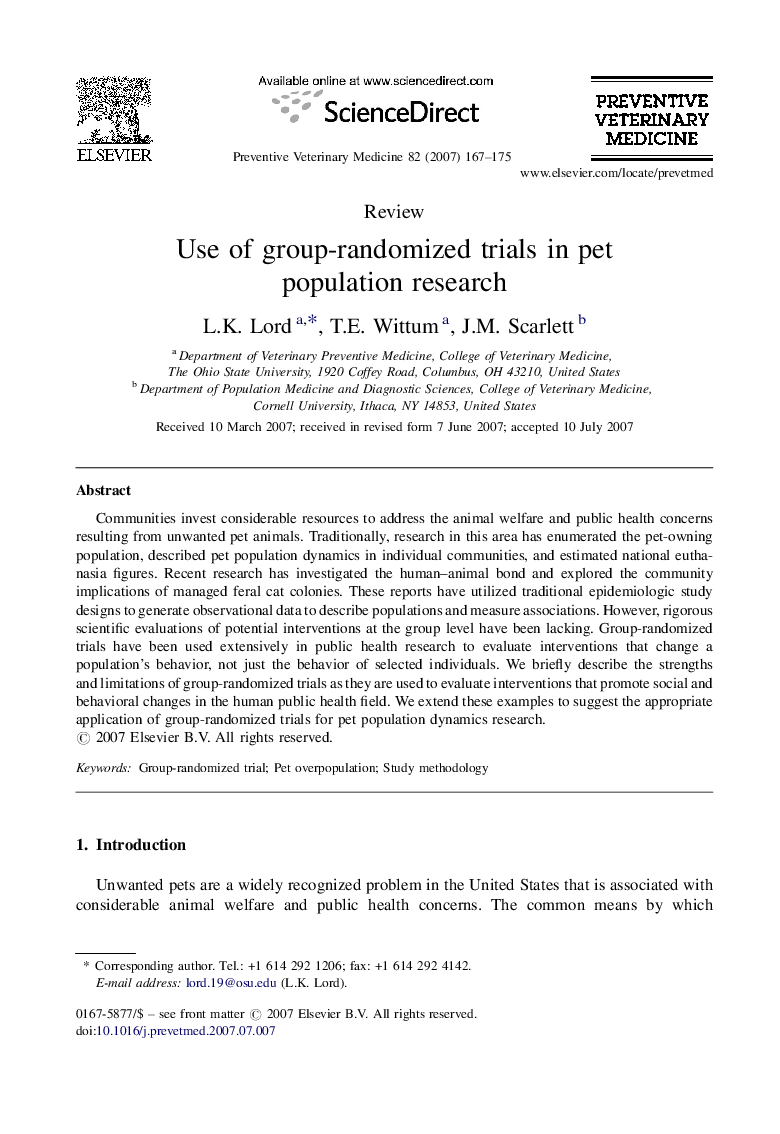| Article ID | Journal | Published Year | Pages | File Type |
|---|---|---|---|---|
| 2453434 | Preventive Veterinary Medicine | 2007 | 9 Pages |
Communities invest considerable resources to address the animal welfare and public health concerns resulting from unwanted pet animals. Traditionally, research in this area has enumerated the pet-owning population, described pet population dynamics in individual communities, and estimated national euthanasia figures. Recent research has investigated the human–animal bond and explored the community implications of managed feral cat colonies. These reports have utilized traditional epidemiologic study designs to generate observational data to describe populations and measure associations. However, rigorous scientific evaluations of potential interventions at the group level have been lacking. Group-randomized trials have been used extensively in public health research to evaluate interventions that change a population's behavior, not just the behavior of selected individuals. We briefly describe the strengths and limitations of group-randomized trials as they are used to evaluate interventions that promote social and behavioral changes in the human public health field. We extend these examples to suggest the appropriate application of group-randomized trials for pet population dynamics research.
